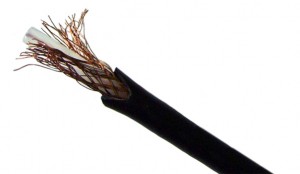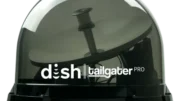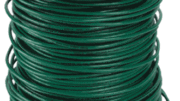It’s just a fact of life… signal loss happens. Of course, the image above would result in complete, 100% signal loss. However, there is a lot more to the idea of loss than just broken cables.
As it turns out, every cable, even a perfect one, has some loss from end to end. Think of it this way: You’re driving along and you turn off the engine. You don’t keep moving at the same speed… you immediately begin to slow down. Part of this is due to the air pushing against your car. However, some of it is due to the fact that your wheels just don’t transfer 100% of their momentum to the ground. They slip a little bit every time. Maybe it’s just a little bit, but they do.
Signal loss over cables is much the same. As an electrical signal (like a cable, satellite or antenna signal) travels down a wire, it loses a little bit of its voltage as it moves. This is like your wheels slipping a little bit. Believe me, there are some complex principles at work here like conservation of energy, inertia, etc. but this isn’t a physics course. You just need to now that even the best cable has loss, and that loss is measurable and predictable.

While we’re talking about loss, every component in your system has loss to it. If you put a “barrel” to join two cables, there will be some signal loss there. If you use a splitter, there will be a lot of loss — especially in an 8-way splitter. Such loss is known as insertion loss. In the case of splitters, the loss is due to the fact that a 2-way splitter puts half the current on each line, a 4-way puts a quarter, and an 8 way puts an eighth of the current on each line. You lose a lot when you use the wrong splitter.

There’s also return loss Return loss can best be visualized as pouring juice from a pitcher into a glass. If you move nice and smooth, none of the juice spills. But, if you move too fast or aren’t steady, some of the juice will pour out of the sides, splashing all over. It’s the same thing with a cable. A cleanly made cable with a good, firm connector at the end will let the signal flow cleanly from point to point. Return loss is measured backwards from the way you think. A high return loss means that very little current is bouncing back; that’s good. A low return loss means a lot of current is getting lost. Return loss and insertion loss are related.
How is loss measured?
Loss is measured in dB, which is an abbreviation for decibels. You probably think of dB as a measure of sound but actually it’s a measure of any sort of measurable intensity. dB’s can be a little hard to understand because, by themselves they don’t really measure anything. You can’t go into a store and say, “Hey, give me a bag of dB’s.” If you think about it, they’re like temperature. When you say it’s 72 degrees, you mean 72 degrees above zero, with zero being a particular coldness. When you say a loss is 10dB, you mean that it loses 10dB of power from point to point.
Just because dBs weren’t confusing enough to the average person, there’s another thing to understand. dBs are measured logarithmically which means that losing 10dB means you are down to 1/10th of what you started with. This will mess you up… losing 20dB means you’re down to 1/100th of what you started with. Every 10dB adds another zero to the bottom of the fraction.
This is important to think about when you realize, for example, that the insertion loss on an 8 way splitter is listed as 18dB. That means that when you used that 8-way splitter and thought that every line would have 12.5% (one-eighth) of the signal strength… forget about it. In fact you’re down to about 2% of the signal strength. Holy moley.
In our next (and final) article in this series, we’ll look at the real world loss in different kinds of cables and why you should (and shouldn’t) use some of them for different tasks.





